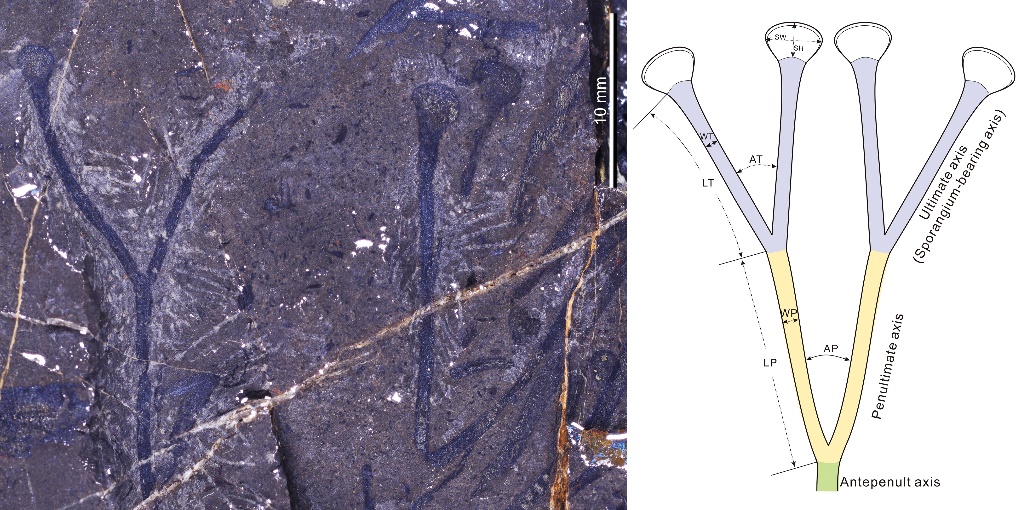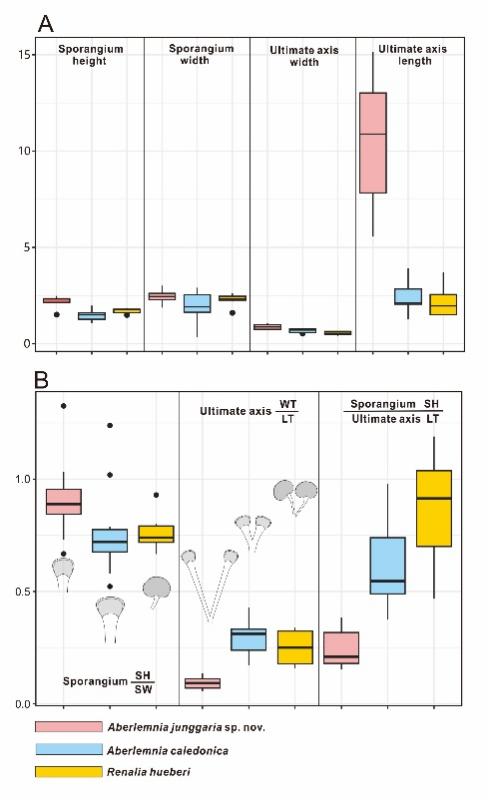As one of the important innovation events in the course of life evolution, plant terrestrialization has profoundly affected and changed the Earth's ecosystem. Recently, the Early Land Plant Evolution working group of Nanjing Institute of Geology and Palaeontology, Chinese Academy of Sciences (NIGPAS), led by Prof. XU Honghe, made new progress in the field of morphology and biogeography of early terrestrial plants, based on systematic study on plant fossils from the Pridoli (late Silurian) of western Junggar, Xinjiang and global Silurian plant fossil occurrence data. The research result was published in Palaeogeography, Palaeoclimatology, Palaeoecology.
The dispersal and biogeographic differentiation of early terrestrial plants is a part of the macroevolution of organisms, which is of great significance to understand the evolution of global ecosystems. Analysis of the fossil specimens and big data provides insights into this topic.
The earliest macro-plants were reported in the Wenlockian strata of the Silurian and subsequently spread to major paleo-blocks around the world. Global Silurian plants were mainly reported from Czech Republic, Britain, Australia, South China and Xinjiang. The well-developed late Silurian strata in the Junggar Basin of Xinjiang, with abundant plant fossils, provide irreplaceable data for the study of macroevolution of early terrestrial plants.
In this study, the research team had established morphological measurement criteria for early terrestrial plants, extracted morphological data using geometric morphometry, and carried out quantitative analysis and comparison of early plants. The conclusion shows that the Aberlemnia junggaria which were found in Xinjiang, despite its simple structure, but they has unique characteristics that are significantly different from other plants, for example, the terminal branches of the Aberlemnia junggaria are more sparse and narrower. This is one of the applications of morphometrics in the study of early terrestrial plants.
Additionally, the research team summarized the global Silurian plant occurrence data, reconstructed the spatio-temporal distribution of Silurian plants, and recognized the global biogeographic zonation evolution through clustering, network and other analysis methods. It is concluded that two phytogeographic realms, the West Junggar-Vietnam and Laurussia-North Gondwana realms, were formed during the Pridoli Epoch. “Global phytogeographic zonation might have an earlier onset considering the widespread microfossil evidence”, says XU.
This study was supported by National Key R&D Program of China and the Chinese Academy of Sciences. This study is one of series contributions to the Deep-time Digital Earth Big Science Program.
Reference: Liu B.C., Zong R.W., Wang K., Bai J., Wang Y., Xu H.-H. 2024. Evolution of Silurian phytogeography, with the first report of Aberlemnia (Rhyniopsida) from the Pridoli of West Junggar, Xinjiang, China. Palaeogeography, Palaeoclimatology, Palaeoecology. 633. 111903. https://doi.org/10.1016/j.palaeo.2023.111903.
.
Fig.1 The holotype of new species of Aberlemnia junggaria from the Pridoli of West Junggar, Xinjiang, and morphometric parameters of the early land plants

Fig.2 Box plots of morphometrical results of Aberlemnia junggaria, A. caledonica, and Renalia hueberi.

Fig.3 Diversity curves of land plant (A) and macroplant phytogeographic network graphs during the Silurian (B). Spatio-temporal distribution of megaplants in the Pridoli (C).
Contact:
LIU Yun, Propagandist
Email: yunliu@nigpas.ac.cn
Nanjing Institute of Geology and Palaeontology, Chinese Academy of Sciences
Nanjing, Jiangsu 210008, China
Download:
